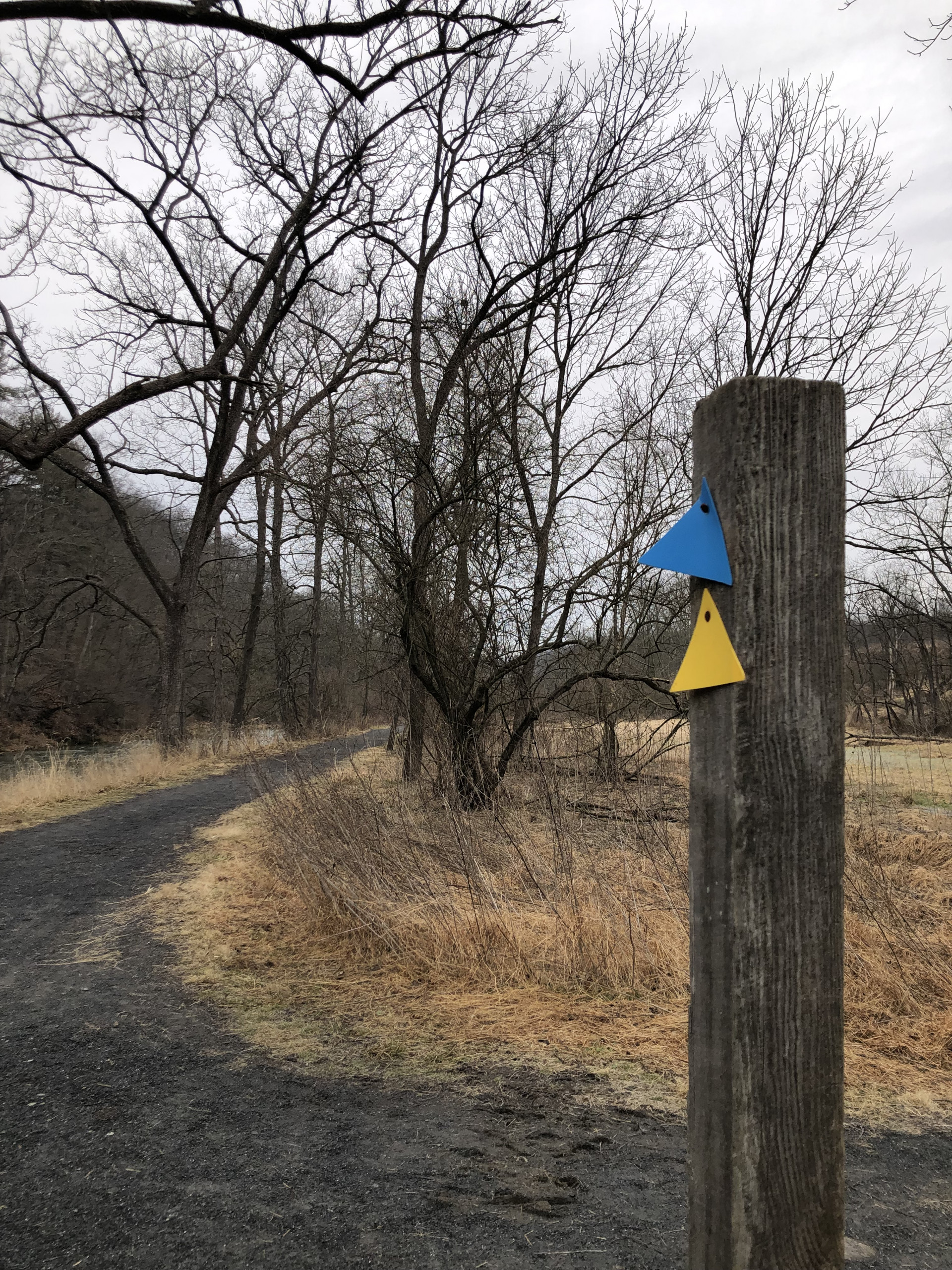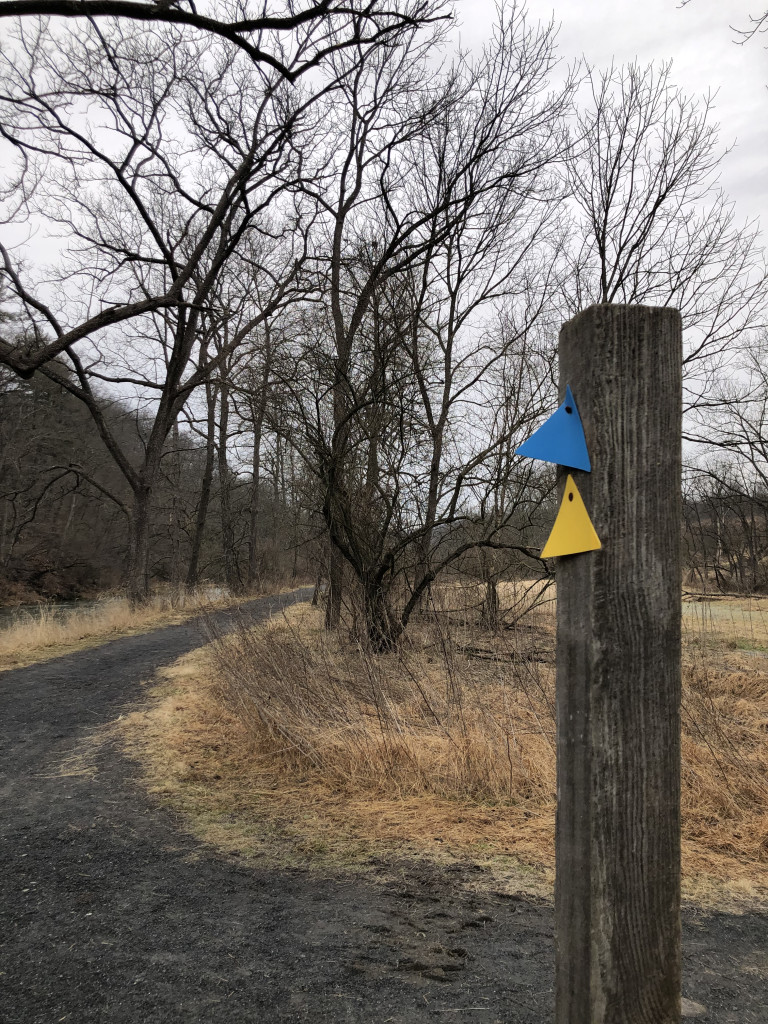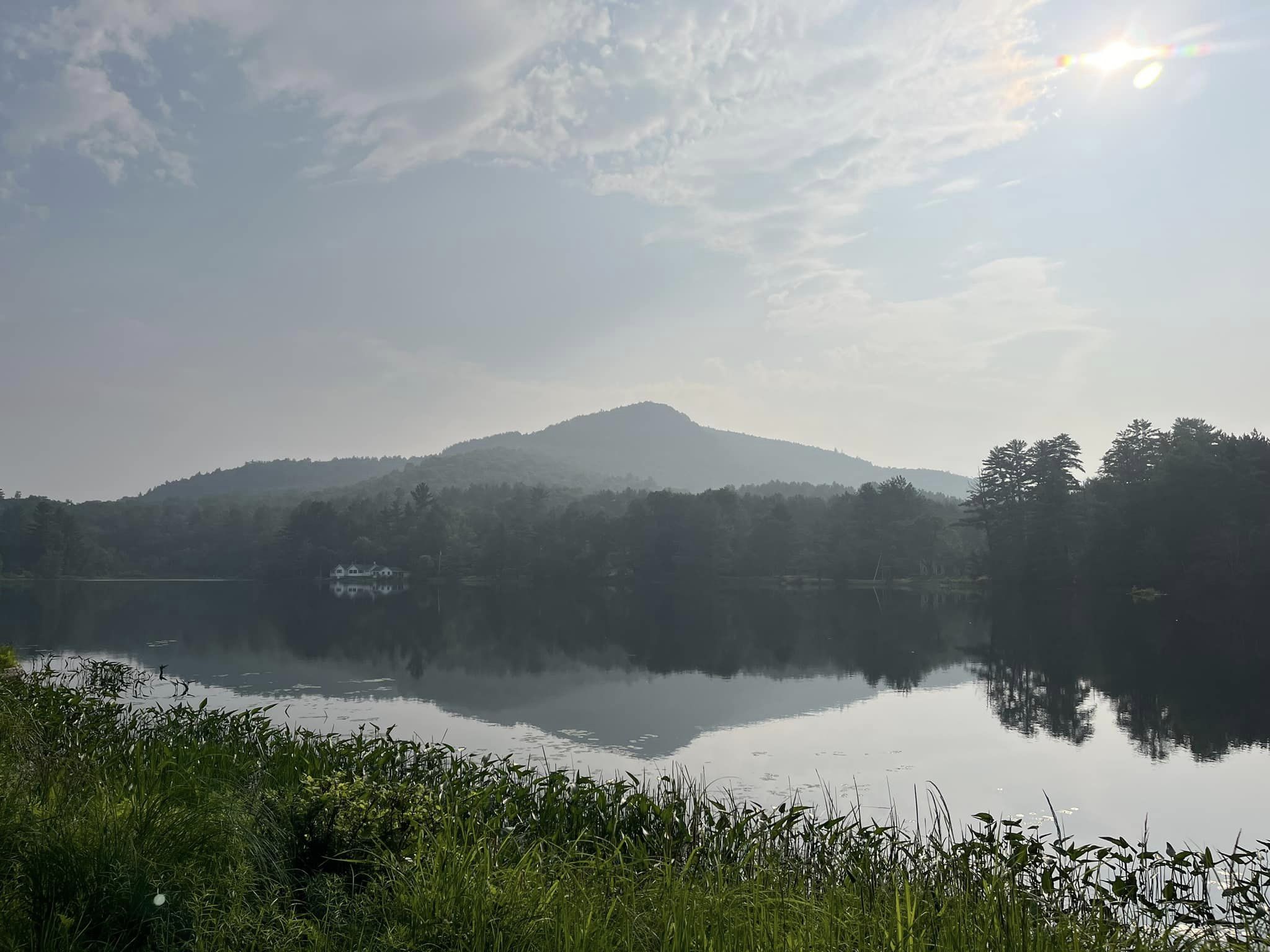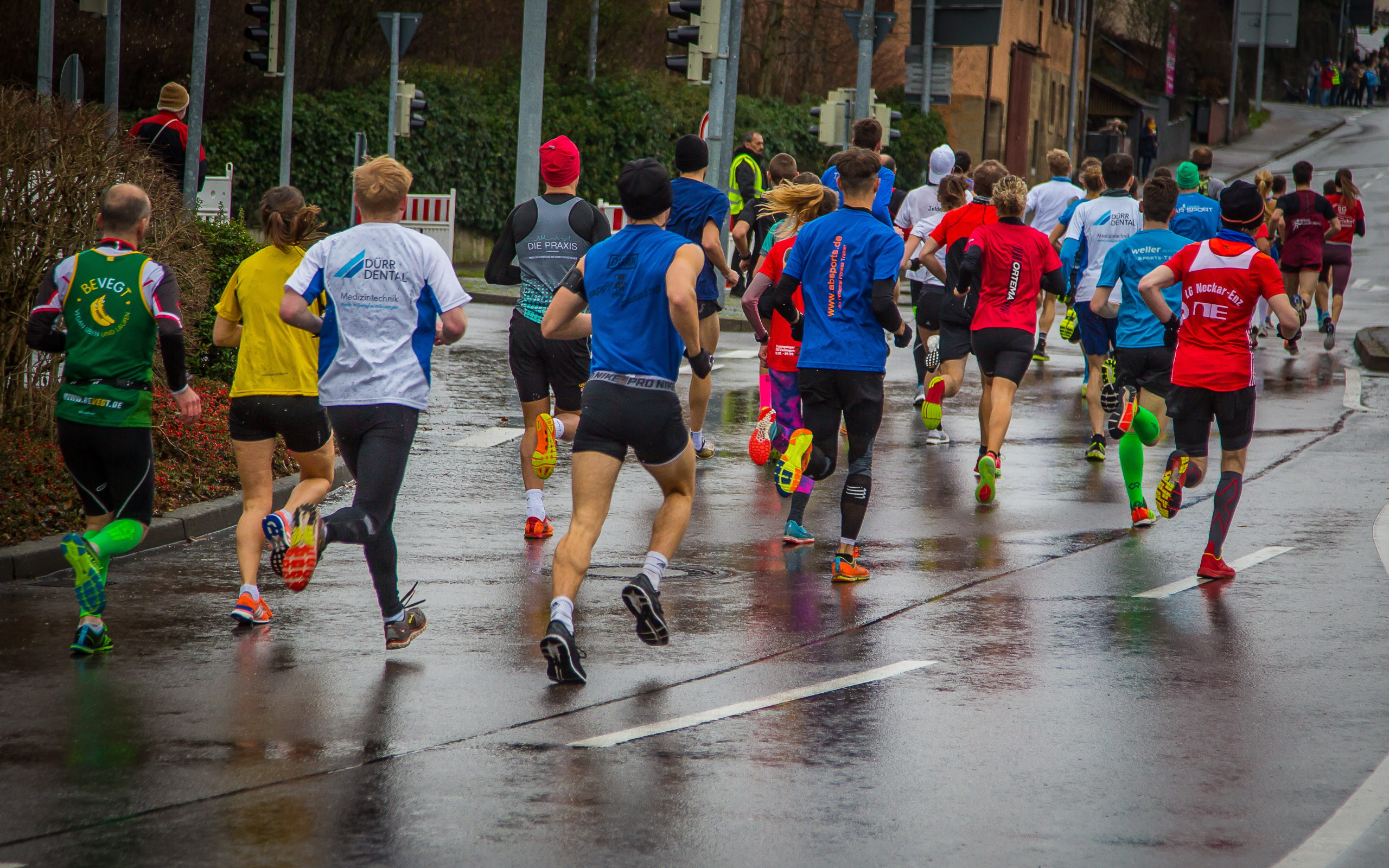Rainbow Blazes
I’d already made use of a downed tree to ford a flooded section of trail, then gotten mauled by a set of 6×2 minute hill repeats. It was the first time I had ever sandwiched a workout inside of a steadier effort rather than just the typical warmup and cool down format. On top of that, this was Sunday – long run day – and I had 10 miles on the docket.
I scattered pebbles as I descended after the final repeat, that delightful scratch of shoes on rock and dirt, and the thick heat of exertion insulated me against cold which had entombed animal tracks in the ground. I paused my watch at the bottom and pulled my phone out of my pocket to double check the map. Now was not the time for a navigational error. And, for someone who makes such errors about as often as they deploy self-deprecating humor, I couldn’t be too careful. Tracing the colored lines on the screen one, two, three times, I was eventually satisfied that I had the correct positioning and route. After having depleted my mental energy completely, I was ready to cruise out the remaining four miles, and the flatness of the section I started down seemed indulgent in comparison to what came before.
This particular trail system is well-marked, and there were sights to be seen, so I let my eyes wander, and my mind with them. The hostility and secrecy of a world waiting to be reborn, brown trees and thickets, all disguised in their bareness, mimicking one another, shorn of leaves and petals. I breathed in. Then snapped to attention.
Clear red, triangular blazes were guiding me, stark against their drab backdrop, but I was subconsciously alert for another color, a deep sky blue, which would denote the turn off. Here it was, pinned to a trunk, but something was wrong; there was another, yellow blaze beneath it, and, according to the map, I wouldn’t be coming upon the correct trail for another few hundred yards. I initially waved away the notion that this could possibly be what I was looking for, but self-suspicion won out. I turned heel and jogged back, pausing at the junction to consider the directionality, elevation. Then, once again, I compared it against the map, and…there was nothing there. Simply a blank white space where the trail ought to be.
I couldn’t help but laugh at myself. Here I was, allergic to the possibility of making one wrong turn, and my own hyper-attunement had caused me to lose confidence and ignore what I already knew, slowing me to a crawl. I had psyched myself out. My own past experience and tendency to lose my way on the trails had been forged into a powerful dictation: don’t trust yourself. Don’t trust your intuition, your own eyes. Instead, stick to the map. Let it provide reassurance, affirmation, and glance down at it to quell your anxieties, just to make sure. You’re fallible and it isn’t, and, though you might think you know where you ought to go, it knows better, so trust in that. Except this time it didn’t. This time the map had made a mistake.
There are maps now in every part of our lives. On the way to the trailhead, I’d used Google Maps to get there, though I’d made the drive at least a half dozen times before. I didn’t check it much, but I punched in the address regardless…just to be safe. That craving for certainty isn’t bound to a particular run, or drive, or moment or day. It infests my life, and, I suspect, the lives of many others. But we have it backwards. Certainty is a fantasy, and mistakes are unavoidable. You will make a wrong turn, you will continue down a path that may be different from what you’d intended. Stuffing the cracks in our confidence with supposedly authoritative information – a map, or else the advice of a loved one, or some societal or cultural norm – is like trying to build a fire with bits of scrap paper. It provides a hot burst of confidence, then reduces to nothing in an instant, leaving you in the same bare, needy state you were before.
Turn left, turn right. Red blazes, blue, yellow, a veritable rainbow of blazes all around us. But somewhere along the line, their meaning became inverted. Rather than seeing each blaze as a new possibility, we instead began to see them as threats – another potential instance for error, for us to make the wrong decision. As I came to that juncture in the trail, my problem wasn’t the possibility that I could make an error. It was my fear of making that error, my refusal to allow it to be a possibility, that created the conditions for making such an error in the first place. My paranoia made it a fate to avoid at all costs. So when I saw a trail that I did not recognize, I had to stop, I had to check my path, despite already knowing intuitively that it was not what I was looking for.
Some level of vigilance is, of course, necessary. It pays to step back and take stock every once in a while, to canvas the path ahead. And many of these tools can be useful – maps, advice, rigid and prescriptive how-to’s. Still, by having so many inputs to tell you what is right for every minor decision, it is easy to catastrophize the consequences of doing something different, when in fact, sometimes, that’s exactly what you ought to do. By marking your path with too many blazes and adhering to them religiously, it may feel as though you’re stoking your own certainty, but in fact, you are also creating more opportunities to be “wrong.” But out there on the trails, and out there in the world, every trail holds promise. And sometimes, if you tuck the map into your back pocket and let your intuition guide you instead, you’ll find out, joyously, just how good it can feel to be wrong.
~Vincent Behe
Add Comment
You must be logged in to post a comment.








